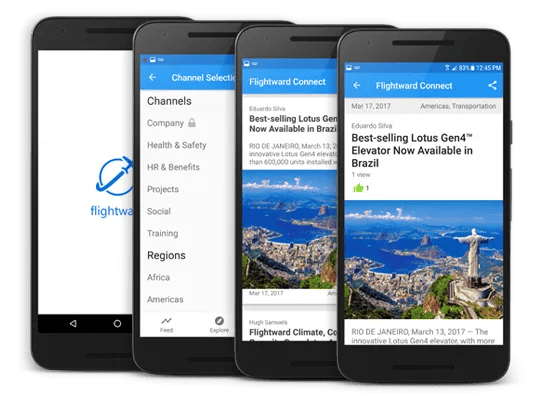The Millennial generation is a force to be reckoned with. Born between 1982 and 2004, and totaling 9.6 million, millennials account for 27 percent of Canada’s population. That’s roughly the same size as the Baby Boomer generation. But that’s not all. The Canadian millennial population is growing due to immigration.
Worldwide projections show that millennials will account for 75 percent of the global workforce by 2025. Change is coming and it’s coming fast.
Millennials are the most educated generation in the history of humankind and the first native digital generation. Environics Analytics notes they were born into a digital world and engage social media daily. This fact alone speaks to their preferences and impacts the way we communicate with this growing, influential audience.
Against the backdrop of a rapidly changing workplace, we see more remote teams, manager-free structures, work from home options and fewer desks at headquarters offices. All these changes make it challenging to communicate clear, consistent, relevant and timely information to employees.
Millennials are mobile and connected. This new business generation cut their teeth on digital technology, and this communication preference will strongly influence the workplace of the future. Whether emailing, texting or calling, smartphones are their preferred source of communication. Add social media, which holds the collective consciousness of an organization, and enter the new age of internal communication.
Great internal communication influences business results. It is omnidirectional, flowing across and through the organization. Executives, managers, team leads and employees all need to be on the same page heading in the same direction toward the same goal. Easier said than done when internal communication channels are fragmented, reaching some of the employees some of the time.
Millennials are typically averse to time-wasting meetings, so the importance of instant, timely, relevant messages that keep them in the know and connect them to the bigger picture are critical. While millennials are masters at carrying on multiple conversations, aggregating communication sources and pushing information through one application is not only more effective, it’s also cost efficient.
Mobile apps for internal communication are quickly becoming mainstream in companies intent on binding their employees together with clear, consistent messages and engaging them in feedback, conversations and social sharing. Needless to say, one of the key advantages is the ability to reach all employees, not just some employees.
The UK-based internal communication agency AB recently conducted research into the use of mobile apps in the workplace. The findings of the research point directly toward increased use of mobile apps for employee communication and notes that in the future there won’t be any distinction between internal and external communication.
“There is no doubt that in the next 10 years employees are going to be much more involved in the creation of that content. And that is only right. Measurement is also going to get better, live and instant – we can’t tell how many people read paper versions of what we have produced. But, on digital channels, we should be able to see exactly when, where and how long for. So, our measurement is going to improve, which means our decisions will improve – they will be based on hard evidence as opposed to our hunches.”
Internal communication builds employee engagement. In fact, according to Deloitte, 78 per cent of business leaders view this as important.
How strategic employee communication apps benefit business:
- More consistent, relevant, timely communication
- Improved productivity
- Lower costs
- Less paperwork
- Optimized business processes
- Fall back during times of crisis
The cloud computing firm Salesforce says that enterprise apps can boost productivity by more than 34% because it allows employees to work smarter and remain productive while on the go, and to make better use of downtime like travelling. In addition, mobile apps unlock the value of big data offering a more seamless way to access and analyze data across the organization.
According to a survey by Deloitte, smartphone penetration has increased exponentially worldwide. For communication professionals, that means it’s past time to pay attention to this channel that reaches internal and external audiences seamlessly as their channel of choice.
A global study by the Economist Intelligence Unit (EIU) found that 60% of employees believed they are more productive by using mobile technology. Another 38% said that the ability to work anywhere at any time had the single greatest impact on their job satisfaction.
The workforce of the future will rely on internal communication apps to keep them in the know, and there are plenty of choices. In fact, the market has exploded. But buyer be aware. Not all internal communication apps are created equal.
If you’re in the market to get your organization on the leading edge, we’d like to demo  our version of a smart, intuitive, strategic internal communication app. We call it Sparrow, and we’ve built it for internal communication professionals to do all the things you want it to do while reducing your workload considerably.
our version of a smart, intuitive, strategic internal communication app. We call it Sparrow, and we’ve built it for internal communication professionals to do all the things you want it to do while reducing your workload considerably.
Contact us and get the information you need to make an important business decision that will engage millennials, connect teams in the rapidly changing workplace, and ultimately show up on the bottom line.
To learn more on this topic, visit our webinars in our Videos page.
This post was originally written by Claire Watson, ABC, MC.